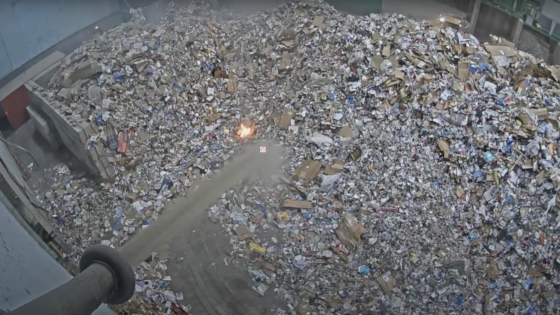In 2024, fire incidents at waste and recycling facilities surged dramatically, with a reported 2,910 cases. This alarming trend highlights the growing risks associated with lithium-ion batteries in the waste stream. As we witness an increase in battery-powered devices, are we doing enough to manage their disposal safely?
- Fire incidents increased by 60% in 2024
- Publicly reported fires reached a new high
- Lithium-ion batteries are a growing concern
- Batteries pose multiple hazards in waste
- $2.5 billion loss from fire incidents last year
Fire Incidents Surge: What’s Causing the Increase in Waste Facility Fires?
Why are fires at waste and recycling facilities becoming more frequent? The rise in lithium-ion battery usage is a major factor. As these batteries are often improperly disposed of, they pose a serious risk of ignition during waste processing. Are we prepared for the consequences?
Understanding the Risks of Lithium-Ion Batteries in Waste Streams
As lithium-ion batteries become ubiquitous in consumer products, their presence in waste streams has skyrocketed. Improper disposal can lead to dangerous fires, making it crucial for consumers to understand the risks involved. Here are some key points to consider:
- Half of reported fires may originate from batteries.
- Improper disposal methods increase fire risks significantly.
- Many batteries can ignite due to punctures or overheating.
- Consumer education on battery disposal is urgently needed.
How to Safely Dispose of Lithium-Ion Batteries
To prevent fires, it’s essential to dispose of lithium-ion batteries properly. Many communities offer recycling programs specifically for batteries. Here’s how you can help:
- Locate local recycling centers that accept batteries.
- Follow guidelines for safe storage before disposal.
- Educate others about the dangers of improper disposal.
The Financial Impact of Waste Facility Fires
Fires in waste facilities have led to staggering financial losses, amounting to approximately $2.5 billion last year. This figure highlights the urgent need for improved safety measures. What can be done to mitigate these costs?
- Invest in advanced fire detection systems.
- Implement stricter regulations on battery disposal.
- Increase public awareness campaigns.
In conclusion, the rise in lithium-ion battery-related fires is a pressing issue that demands attention. By understanding the risks and taking proactive steps, we can help reduce the number of incidents and protect our communities.

































